Image Credit: Alex Wilson
Image Credit: Alex Wilson The solar water heating systems at Cobb Hill CoHousing rely on small PV panels to power the circulating pump--when the sun shines the pump circulates fluid through the collectors.
Image Credit: Alex Wilson
This summer is a great time to get a good deal on a solar water heating or solar-electric (photovoltaic) system for your home. While I argued a few months ago in this column that the 30% federal solar tax credit has some flaws–key among them being that it’s based on the dollar value rather than performance and that there’s no cap on the cost of the system (and credit you can earn)–these aren’t reasons not to take advantage of it.
While the solar tax credits are scheduled to be in place until 2016, I won’t be at all surprised to see them scaled back or eliminated well before then. If you haven’t noticed, the political pendulum is swinging, and incumbents who supported the stimulus funding are now being cast as reckless spenders and are losing primaries. I think we’ll see a growing focus on deficit control–and that could well include scaling back on incentives like the solar tax credits. The bottom line is that now’s the time to benefit from the solar tax credit.
For most homeowners, installing a solar water heating system will have a more rapid return on investment (ROI) than installing an electricity-generating photovoltaic (PV) system, so I’ll focus on the former. Most solar water heating systems for typical homes have two flat-plate solar collectors. Either water or an antifreeze solution is pumped through the collectors during the day and heat is transferred from the absorber plate to that fluid. A glass cover plate on the collector, insulation behind the absorber plate, and pipe insulation all help to improve efficiency and direct more heat into the circulating fluid.
While the collectors sit on your roof (or on a separate rack outside the house), there are also solar water heating components inside the house. Most systems have a separate solar hot water storage tank in the basement or utility room that serves as a preheater for the standard water heater. A heat exchanger in this tank transfers heat from the fluid circulating through the collectors into the storage tank. Rather than a preheater tank, some systems have a single tank containing both the heat exchanger from the solar collectors and a standard heating element.
Controls and a pump round out the system. The conventional approach is to have a differential thermostat that senses temperatures both in the collectors and storage tank, and then switches on the circulator pump when the collectors are warmer than the water in the storage tank. Some systems, however, now use a simpler control system: a separate PV module powers the circulating pump, operating only when the sun is shining.
Solar water heating systems vary a great deal in their cost, depending on the size, type of system, added features like digital monitoring, and challenges of the installation. The typical price range for a residential system is $5,000 to $8,000, installed. With new construction, costs can be lower, especially if a lot of identical systems are being installed on multiple tract homes.
To function efficiently, solar panels must be installed on a good site. The sun traverses the southern sky during the day, rising in the east and setting in the west, so the best site for solar is a south-facing roof. The pitch of the roof isn’t critical. A steeper pitch will be a little better in the winter (when the sun is lower in the sky), while a shallower pitch is better in the summer (when the sun is higher in the sky), but most standard roof pitches will work all right. There should be as few obstructions as possible, so cutting or pruning nearby trees is often an important part of a solar installation.
A properly sized and well-sited solar water heating system should satisfy most of your hot water needs during the summer months, but it may provide less than half in the winter, when there is less sunlight. To maximize the percent of hot water provided by the solar system, you should carry out appropriate water conservation efforts, such as installing low-flow showerheads and washing laundry in cold water.
Contact a local or regional solar installer for more information and to schedule a site visit. Be sure the contractor you pick is more interested in a quality, reasonably priced installation than on maximizing the tax credit. (Be aware of scams in which roofing or other costs unrelated to the solar system are added into the installation price so that Uncle Sam will pay you more–an indicator that the contractor’s motivations are misplaced.)
I invite you to share comments on this blog.
Alex Wilson is the executive editor of Environmental Building News and founder of BuildingGreen, LLC. To keep up with his latest articles and musings, you can sign up for his Twitter feeds.
Weekly Newsletter
Get building science and energy efficiency advice, plus special offers, in your inbox.

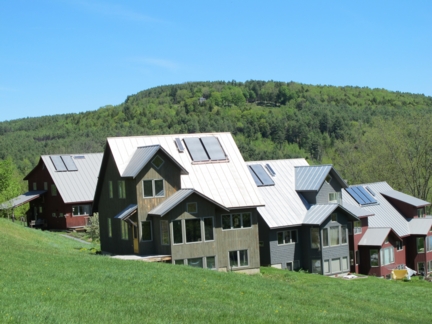




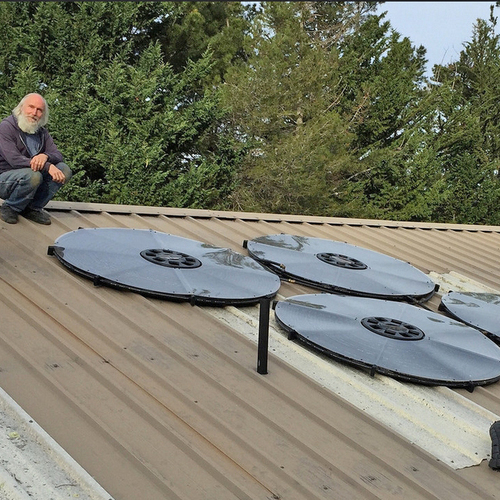
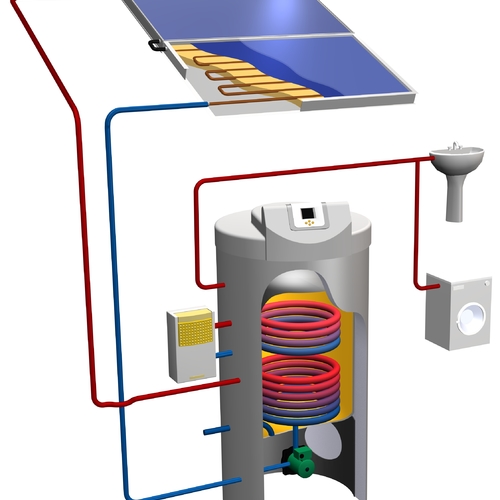
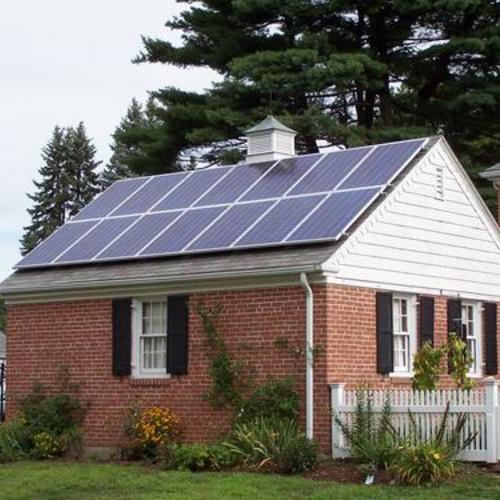
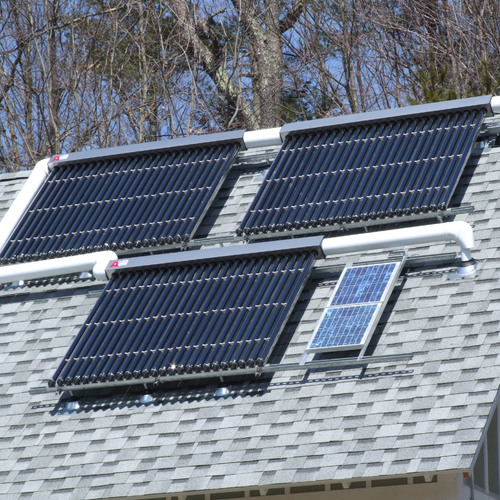






7 Comments
Excellent article
Thank you for posting such good information on solar water heating systems, most consumers don't immediately think about these options. I made sure to link this post on our website.
No evidence for rapid ROI
Alex provides no evidence that solar hot water has a rapid ROI. Based on my calculations using a middle of the road, natural gas hot water heater, the ROI on solar hot water is over 40 years.
I think it would be really neat to have sun-heated hot water, and I was interested in installing one, but I discovered that the cost of the system doesn't make economic sense for me.
With four people and lots of laundry, the cost for my hot water is $20/month. I was quoted $10,000 for an installed system. If the solar hot water system replaced 100% of my gas-heated hot water, which it won't, it would take 41.6 years to pay back. More likely, it will only replace 50% of the gas.
If you include the time cost of money, I could pay for my hot water gas with the interest on the $10,000. And still have the $10,000!
For a solar hot water heater to make sense economically, I'm guessing that you would have to have an expensive electric hot water heater and a very inexpensive installation.
If you want to install a solar hot water heater to be green, that's great. But don't do it for the ROI.
solar hot water ROI
I had solar hot water installed in January this year. it cost-total- a shade over $8,000 for 130gal system. I used Heliodyne & a local installer. I am now saving $108 per month, average, giving me an expected ROI of a bit more than 6 years. Certainly better than 40!
solar hot water install costs
By the way, I had bids ranging from $7,000 to more than $13,000 for the same system. Most included a special solar storage tank costing more than $2,000. My installer used 2 tanks: a storage tank of 80 gals (electric, not hooked up to electricity) and a 50 gal electric (hooked up to the grid). Local codes require a back-up system. During the winter, I used 2 hours of electricity per morning. We also have 4 in the house and lots of laundry.
Great info
Larry, thanks for the facts - do you happen to live in the north? or southern states? Just wondering about your "winter" usage. How efficient are the storage tanks for holding the water at a good temp? Like the one NOT hooked up to electricity. I live in Wyoming and have thought about installing one of these.
Thanks
Thank you.
It can be quite expensive installing solar panels but you can get a grant from the council (obviously country dependent) to ease the costs. You can also claw back some money by generating electricity for the national grid.
Thanks for the details
Ironically, I never asked about how these solar hot water systems work during 4 visits I made last year as part of a sustainability fellowship I participated in at Cobb Hill. I did see the smaller PV units next to the hot water panels, so I surmised the former powered pumps for the latter. A shame that they cost so much. While in SE Asia one winter, I had the privilege of using 160L thermosiphon style solar hot water heaters placed on wooden platforms above the bungalows of an eco-lodge in southern Laos. The showers were gravity fed. The water was HOT (had to be mixed with cold)- in the mornings as well as after a hot day, and even after 3 days of no sun, I was told. Their cost? US$400 shipped from- you-know-where: China! No glycol, no moving parts- only a float valve to keep the tank full. In SE Asia, you don't worry about freezing of course; but I wish we could get systems at least in this ballpark price.
Log in or create an account to post a comment.
Sign up Log in